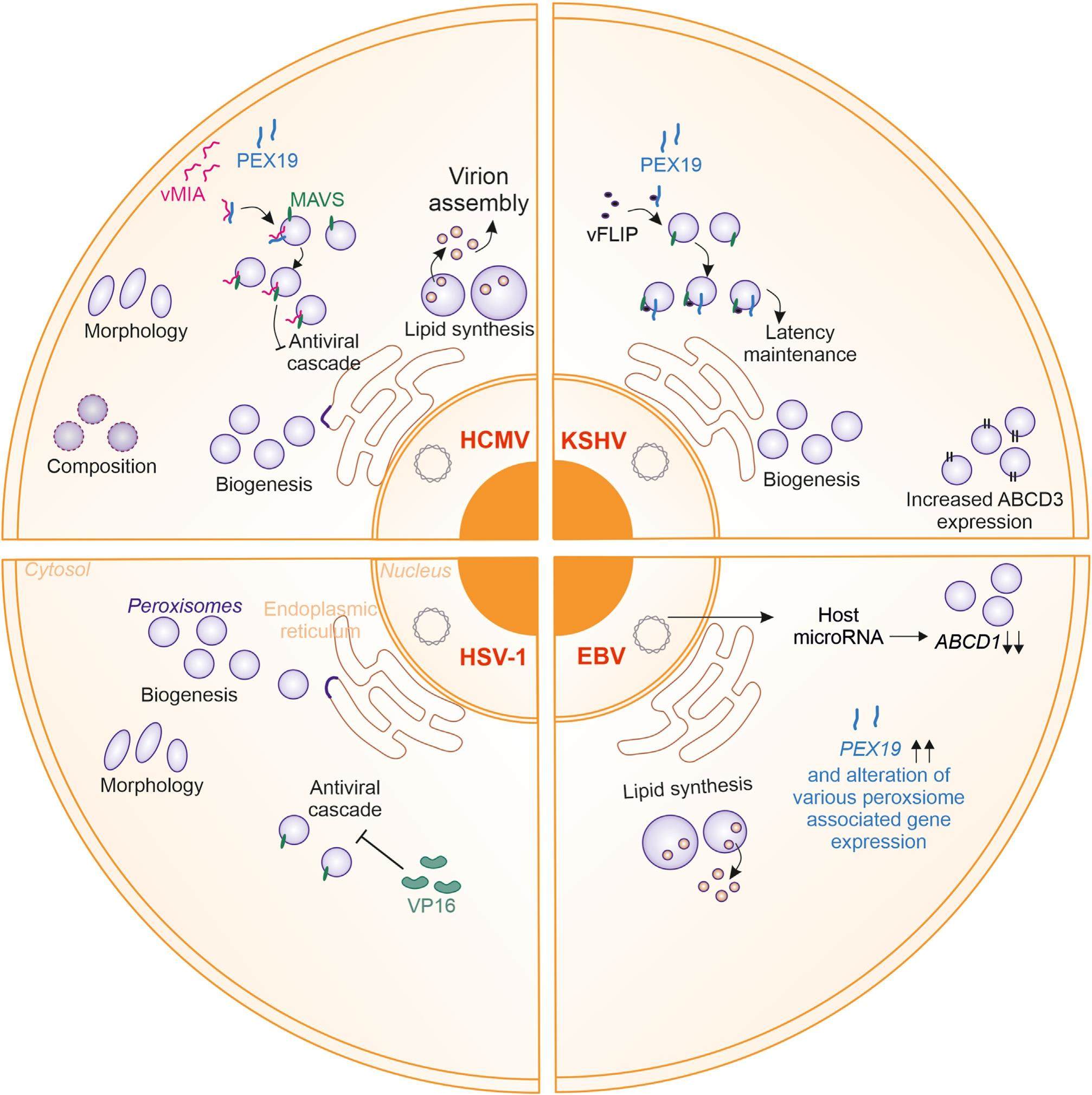
Herpesviral interplay with peroxisome: An underexplored viral niche


Herpesviruses are smart pathogens that can infect and have lifelong persistence inside the host. Many human herpesviruses have been shown to affect human health in immunologically challenged conditions. Mostly the herpesviruses involved in such cases and widely researched are herpes simplex virus (HSV), human cytomegalovirus (HCMV), Kaposi sarcoma herpesvirus (KSHV), and Epstein-Barr virus (EBV). All these herpesviruses share similar virion structures and life cycles. They possess dynamic mechanisms to manipulate host cell components for entry, immune evasion, replication, gene expression, maintenance of latency, or production of virions by the lytic cycle. Jean Beltran and colleagues reported that herpesviruses are unable to infect cells lacking peroxisomes. The peroxisome is a single membrane-bound organelle that is present in all eukaryotic cells. Their abundance, size, protein composition, and activity can vary according to cell type and stage. Organelle dysfunction related to biogenesis or organelle-driven cellular processes has been linked to developmental disorders, aging, neurological effects, and cancers.
